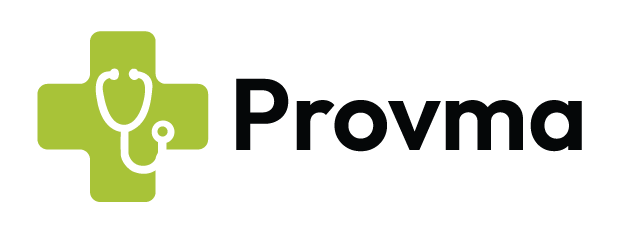A virtual medical receptionist helps healthcare practices manage front-desk tasks. It also reduces the workload for in-house staff. Clinics of all sizes use these services. They support with calls, forms, and patient communication.
This blog explains how a virtual medical receptionist improves service. It also helps reduce costs and improves day-to-day operations.
Shorter Wait Times and Faster Support
Phone wait times are high in most clinics. Patients are often kept on hold for over 4 minutes. The standard is around 50 seconds. Over 60% of patients hang up if they wait for more than one minute. A virtual medical receptionist answers calls quickly. This prevents missed calls. It also helps patients get answers faster. These receptionists confirm appointments and collect forms before the visit. This helps reduce in-office delays. It also improves patient flow.
The national average wait time in clinics is 13.8 minutes. A virtual medical receptionist helps lower that number. They keep the front desk moving at a steady pace.
Appointment Scheduling and Fewer No-Shows
Missed appointments cause large financial losses. U.S. clinics lose over $150 billion each year. A no-show can cost a doctor about $200.
A remote medical receptionist helps in many ways:
- They answer calls and messages 24/7
- They book appointments through calls, email, or portals
- They send reminders using calls or texts
- They help reschedule cancelled appointments
Patient Opinion:
81% of patients say that tech-based booking makes scheduling easier.
These steps reduce no-shows. They also fill empty time slots. This keeps schedules full and waitlists short.
Insurance and Billing Support
Insurance and billing take a lot of time. Staff often face delays with claims. Around 20% of medical claims get denied on the first try. Nearly 60% of denied claims are never sent again. This causes lost income.
A medical office virtual receptionist can help:
- They check insurance before appointments
- They collect patient details and update records
- They handle referrals and authorizations
- They answer billing questions
| Task | In-House Cost | With VMR |
| Reprocessing Claim | $25 avg/claim | Often avoided |
| Manual Insurance Check | 5–10 mins | Done remotely |
The U.S. could save $25 billion by automating admin tasks. A virtual medical receptionist helps avoid mistakes. They finish billing steps on time. This improves your cash flow.
HIPAA Compliance and Safe Data Handling
Medical data must stay safe. In 2023, one healthcare data breach cost $10.93 million on average. HIPAA fines are high. They can go up to $50,000 per issue. The total can reach $1.5 million a year for uncorrected mistakes.
A virtual medical receptionist follows privacy rules. They do this by:
- Using secure tools for calls and documents
- Signing Business Associate Agreements (BAAs)
- Following HIPAA rules for every task
They handle credit cards, faxes, and patient records in a safe way. This protects your practice and keeps patient trust.

Less Burnout for Front Desk and Clinical Staff
Front-desk staff face constant pressure. They handle phones, forms, and insurance issues all day. Many doctors also deal with admin tasks. This leads to stress and burnout.
A med receptionist working remotely can help. They:
- Take calls and manage messages
- Book appointments
- Help patients with common questions
- Take care of routine paperwork
Doctor Feedback:
Many doctors say admin work causes more stress than patient care.
When these jobs move to a virtual medical receptionist, your team gets relief. Nurses and doctors focus more on patients. This improves morale. It also helps reduce staff turnover.
24/7 Support and Growth Support
Most healthcare needs happen outside normal hours. Patients call at night or on weekends. A Virtual Front Desk stays open around the clock. It helps you answer calls without hiring extra staff.
A virtual medical receptionist provides:
- Live answering at all hours
- After-hours appointment booking
- Emergency call forwarding
- Support for basic patient requests
Consumer Insight:
61% of patients want healthcare access like other 24/7 services.
You can also add more hours during busy times. Examples include flu season or school checkups. If things slow down, you can cut back without layoffs. This helps small clinics manage changing call volumes.
Better Communication and Patient Experience
Patients want polite and quick answers when they call. In a Harris Poll, over half said that front-desk staff affect how they view a clinic.
A virtual medical receptionist helps by:
- Greeting every caller in a warm and clear way
- Handling calls, messages, and emails
- Solving common issues on the first call
Bad communication causes patients to leave. A remote medical receptionist prevents that. They answer fast and help with real care. This improves trust and helps you keep more patients.
Pro VMA: Your Partner for Front Desk Support
Pro VMA offers U.S.-based virtual medical receptionist services. Their staff understand how clinics work. They support medical and dental offices of all sizes.
They offer:
- 24/7 call answering and booking
- HIPAA-compliant communication
- Help with insurance checks and follow-ups
- Greeting scripts that match your practice style
Whether you run a dental office or family clinic, they support your team. Patients often cannot tell they are speaking with a remote receptionist. The service feels just like your front desk.
Thousands of clinics use Pro VMA. Their team helps reduce admin pressure and improves front-desk support.
Frequently Asked Questions (FAQs)
1. What does a virtual medical receptionist do?
They answer calls, book appointments, and support front-desk work from a remote location.
2. Is a remote medical receptionist HIPAA compliant?
Yes. Services like Pro VMA train staff and follow HIPAA rules.
3. Can a virtual receptionist support billing tasks?
Yes. They verify insurance and handle common billing questions.
4. How do medical offices save money with this service?
It lowers no-shows, reduces billing mistakes, and avoids hiring more staff.
5. Is a med receptionist available during off hours?
Yes. Most services offer full-day and weekend support.
6. Will patients know they are speaking to someone offsite?
No. Trained staff use your scripts and speak just like your team.



